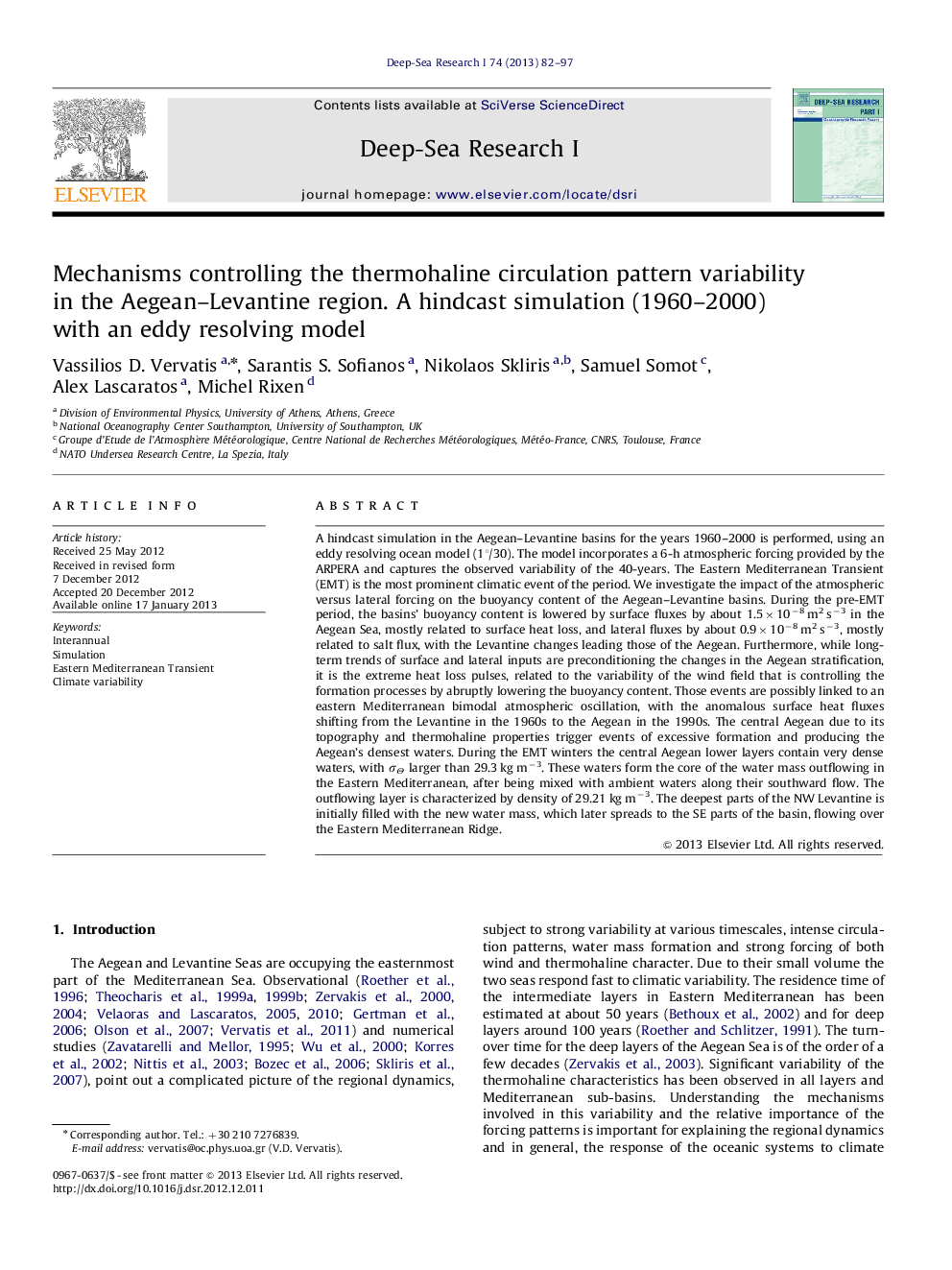| کد مقاله | کد نشریه | سال انتشار | مقاله انگلیسی | نسخه تمام متن |
|---|---|---|---|---|
| 4534638 | 1626356 | 2013 | 16 صفحه PDF | دانلود رایگان |

A hindcast simulation in the Aegean–Levantine basins for the years 1960–2000 is performed, using an eddy resolving ocean model (1°/30). The model incorporates a 6-h atmospheric forcing provided by the ARPERA and captures the observed variability of the 40-years. The Eastern Mediterranean Transient (EMT) is the most prominent climatic event of the period. We investigate the impact of the atmospheric versus lateral forcing on the buoyancy content of the Aegean–Levantine basins. During the pre-EMT period, the basins’ buoyancy content is lowered by surface fluxes by about 1.5×10−8 m2 s−3 in the Aegean Sea, mostly related to surface heat loss, and lateral fluxes by about 0.9×10−8 m2 s−3, mostly related to salt flux, with the Levantine changes leading those of the Aegean. Furthermore, while long-term trends of surface and lateral inputs are preconditioning the changes in the Aegean stratification, it is the extreme heat loss pulses, related to the variability of the wind field that is controlling the formation processes by abruptly lowering the buoyancy content. Those events are possibly linked to an eastern Mediterranean bimodal atmospheric oscillation, with the anomalous surface heat fluxes shifting from the Levantine in the 1960s to the Aegean in the 1990s. The central Aegean due to its topography and thermohaline properties trigger events of excessive formation and producing the Aegean’s densest waters. During the EMT winters the central Aegean lower layers contain very dense waters, with σΘ larger than 29.3 kg m−3. These waters form the core of the water mass outflowing in the Eastern Mediterranean, after being mixed with ambient waters along their southward flow. The outflowing layer is characterized by density of 29.21 kg m−3. The deepest parts of the NW Levantine is initially filled with the new water mass, which later spreads to the SE parts of the basin, flowing over the Eastern Mediterranean Ridge.
► A hindcast run 1960–2000 with an eddy resolving model for the Aegean–Levantine Seas.
► Impact of atmospheric versus lateral forcing on basins buoyancy content.
► Long-term trends are preconditioning the changes in the Aegean stratification.
► Extreme heat loss pulses due to the wind variability are related to DWF processes.
► Those events are linked to an eastern Mediterranean bimodal atmospheric oscillation.
Journal: Deep Sea Research Part I: Oceanographic Research Papers - Volume 74, April 2013, Pages 82–97